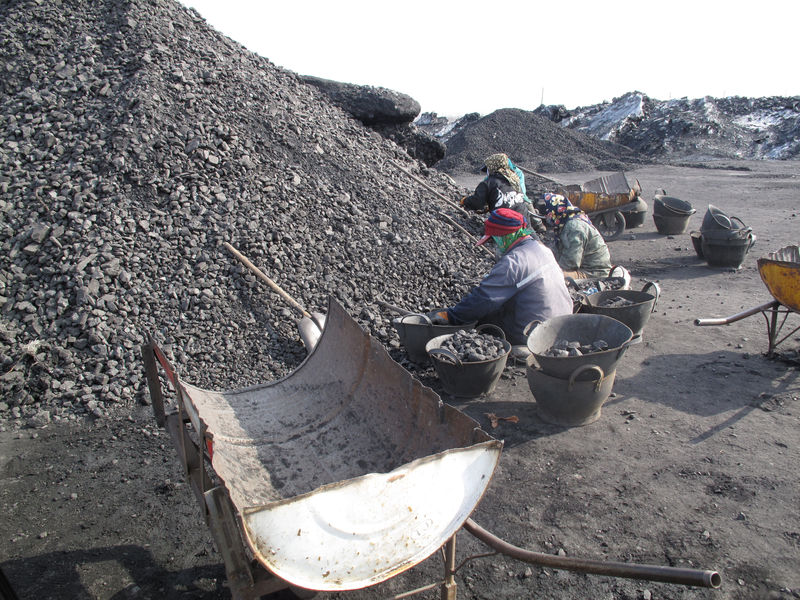By Meng Meng and Henning Gloystein
BEIJING/SINGAPORE (Reuters) - As the first major cold snap of the winter grips northern China this week, utilities are desperately trying to overcome a shortage of the coal they need to produce power as customers crank up heating to fight the chill.
With coal inventories languishing below 20 days of use, well under the five-year average, power companies will be forced to stick with their record pace of imports for the rest of the year, stoking an unprecedented rally that has seen international prices more than double in 2016.
The rush for foreign coal used to make electricity showed no sign of easing this week, with the Pacific benchmark Newcastle coal price
One trader based in the major Rizhao coal port reported North Korean coal offered at as much as 800 yuan (97 pounds) per tonne. The price could not be verified, but it would be almost 150 yuan above the current domestic market.
"The price is insanely high, but there is a market for it," said the trader, declining to be identified as he was not authorised to speak to media.
The crunch comes after Beijing pushed to slash local coal output as part of its 'war on pollution', underscoring the challenges of balancing ambitions for clean air with the reality of an economy that has relied so heavily on dirty fuels.
It also follows an unusually cold winter last year and a blistering summer in some regions that drained inventories.
Chan Yijun, head of consultancy Shanxi Fenwei Energy, said imports in the fourth quarter would remain at the all-time high set over the previous three months at about 60 million tonnes.
Shipping data in Thomson Reuters Eikon shows China's seaborne coal imports were 20.03 million tonnes for October, the biggest monthly total since Thomson Reuters started assessing the figures in January 2015.
In the short term, that kind of appetite could push prices up by another 100-200 yuan per tonne, an informal survey of five traders and analysts by Reuters showed, despite the government repeatedly saying there are no fundamentals to support further gains.
ANOTHER COLD ONE
Thomson Reuters Eikon weather data shows temperatures in Beijing are expected to remain around 2 degrees Celsius below the seasonal norm until at least mid-December, piling pressure on coal stocks.
Low hydro levels, including at the massive Three Gorges Dam, have also been ramping up the burden on coal-fired power generation.
In the first nine months of the year, China's accumulated supply deficit for thermal coal was more than 138 million tonnes compared with a surplus of 18.54 million tonnes in the same period last year, data provided by Fenwei Energy showed. The deficit is also more than the volume China imported in the first three quarters of 2016.
That pushed weekly thermal coal inventory in early September to its lowest level since 2008. Though it has climbed slightly since, stocks have been hovering under 20 days of use since April, levels considered critically low, data shows.
"Markets are worried that the pace of increase in coal output is not matching the surge in winter demand," said Shanxi Fenwei's Chan.
Only after the winter, well into 2017, will domestic stocks likely be replenished as Chinese mines step up output again, helping ease prices.
In a reversal of its previous pledge, China's state planner has allowed 900 coal mines to boost thermal production, upping output by 1 million tonnes per day.
It has also asked the nation's top coal miners to cap their 2017 supply contracts at or below current spot market levels, sources said, a highly unusual move that reflects Beijing's growing panic about runaway prices.
"A key question hanging in everyone's mind is how fast coal mines can ramp up production to help relieve worries," said Zhang Xiaojin, a Zhengzhou based analyst with Everbright Futures.
